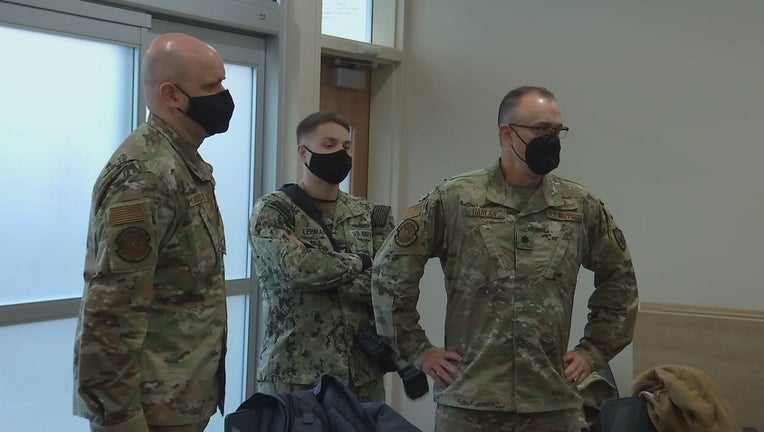Minnesota health care providers, facing staffing squeeze, turn to soldiers for help

(FOX 9)
ST. PAUL, Minn. (FOX 9) - Minnesota's health care workforce is stretched so thin during one of the country's worst COVID-19 surges that the state is increasingly turning to the military for help.
Gov. Tim Walz said Monday he is activating 400 Minnesota National Guard soldiers to provide support to long-term care facilities facing severe staffing shortages. The governor is also freeing up $50 million of federal money under his control for retention and hiring bonuses at nursing homes.At the same time, a U.S. Defense Department emergency medical team arrived at Hennepin County Medical Center to address a staffing squeeze that has forced the hospital to turn away some patients.
"For us to do a call for help, I hope the community hears that," Jennifer DeCubellis, Hennepin Healthcare's chief executive, told reporters Monday. "We’re not at capacity. Most days we’re over capacity."
The federal team will help staff a 10-bed inpatient unit to act as a release valve for the emergency department. Currently, the ER backs up because there aren't enough staffed inpatient beds, forcing the hospital to turn away five to 50 transfer patients a day, said Dr. Dan Hoody, the hospital's chief medical officer.
"The key bottleneck right now is emergency department beds," Hoody said. "It is not uncommon for a physician in rural Minnesota to call us several times in a day looking for a bed."
Walz said last week that another 22-member unit will arrive at St. Cloud Hospital this week to help with staffing problems there. Other hospitals have asked for help, but the federal teams are themselves in short supply, Minnesota Health Commissioner Jan Malcolm has said.
At the same time, Minnesota is turning to the National Guard to relieve issues at long-term care facilities.
Over the next week, National Guard members will start training as certified nursing assistants and temporary nursing aides, the governor said in a news release. National Guard teams will deploy for up to three weeks at a time to nursing homes that ask for help from the Minnesota Department of Health.
LeadingAge Minnesota, a trade group that represents senior care facilities, estimates that 23,000 jobs are open -- 20 percent of the industry's workforce.
"We’re actually losing more staff than we’re able to recruit on a month-to-month basis," said Kari Thurlow, the group's senior vice president of advocacy. "We hope that today’s action will help reverse that trend and help us stabilize the workforce."
Guard members will also continue to be deployed at three hospital decompression sites in Shakopee, Brainerd, and St. Paul to provide transitional care to patients who no longer need to be hospitalized.
Walz also said he will use $50 million in federal funding to help with employee hiring and retention at long-term care facilities. The facilities must use at least 90 percent of the emergency grants for hiring and retention bonuses. Nursing facilities can use the leftover funding to offset increased payroll taxes, workers' compensation premiums, and federal and state unemployment insurance associated with the bonuses.
The governor's office has not released specific bonus amounts or a timeline. Thurlow said she expected the size of the grants would depend on the amount of Medicaid money a facility receives and its number of residents.
The $50 million from the American Rescue Plan is under Walz's purview. Monday, the governor's administration submitted the spending plan to a legislative advisory commission for review.
Also on Monday, Minnesota Senate Republicans proposed a special session to approve a nursing home relief package of up to $200 million in federal funds. The money would create $1,500 bonuses for staff retention and sign-backs of former staff, and up to $2,000 training and sign-on bonuses for newly trained certified nursing assistants.
But the Senate GOP was mum when asked if it would use the special session to vote to fire Health Commissioner Jan Malcolm. Some Republicans have called for Malcolm's job, and Walz has said he won't call a special session unless the GOP drops the threat.
About 70 percent of the state's nursing homes are limiting the number of residents because of staffing problems, Thurlow said.
The state is dealing with the country's second-worst COVID-19 outbreak, behind only Michigan. Minnesota's seven-day average positivity rate was 9.7 percent, while 1,373 people have been hospitalized – a 40% increase since the start of November.

